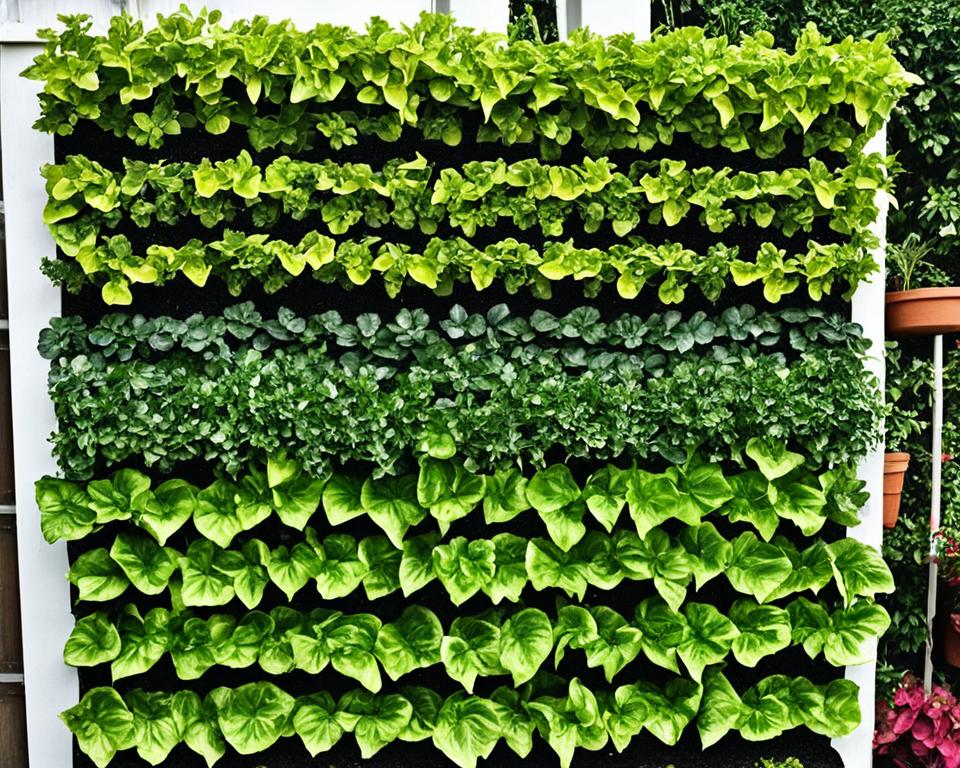As an enthusiast looking to maximize your growing potential, understanding the best vertical gardening systems can offer transformative results. Whether you’re faced with the challenge of limited outdoor space or crave a lush, plant-filled ambiance indoors, vertical gardening benefits address these aspirations with elegance and efficiency. Embrace space-saving gardening solutions as you explore a range of innovative gardening setups designed to turn even the smallest of areas into thriving, verdant retreats. Beyond mere functionality, these vertical planter options extend into captivating features of your living space, creating a visual feast that elevates your environment and mood alike.
Key Takeaways
- Discover top-rated vertical gardening solutions that save space and enhance your living area.
- Learn how vertical gardening systems can benefit your health and home aesthetics.
- Identify innovative setups tailored to urban dwellers with limited garden space.
- Explore the variety of planter options that cater to both novice and experienced gardeners.
- Consider the ecological and practical advantages of integrating vertical gardening into your lifestyle.
Embrace the Rise of Vertical Gardening
As urban environments continue to expand, the luxury of ample garden space becomes a rarity for many city dwellers. Yet, a green thumb need not be dormant, thanks to vertical gardening ideas. This method encourages the blossoming of an urban oasis where traditional gardens cannot sprawl. Whether you’re seeking to enhance your patio ambiance or cultivate herbs and vegetables within your living space, vertical gardening is a canvas for botanical creativity.
With easy vertical gardening techniques, you can transform even the most confined areas into flourishing vertical ecosystems. The inherent flexibility of vertical gardens allows for both indoor and outdoor cultivations, tapping into the ever-growing appeal of farm-to-fork within one’s own residence. Not only do these gardens provide aesthetic value and personal satisfaction from homegrown produce, but they also offer profound vertical gardening benefits, such as improved air quality and a reduction in one’s carbon footprint by minimizing food transportation.
Consider the following when embarking on your vertical gardening journey:
- Select a system that fits your space and budget – from simple trellises to elaborate hydroponic setups.
- Identify plants suited for vertical growth, like vine tomatoes, climbing beans, or decorative ferns and flowers.
- Maximize light exposure for your plants, whether by positioning near windows or utilizing grow lights.
By leveraging vertical spaces, you nurture not only a garden but also resilience and self-sufficiency in your urban dwelling. As you explore the vertical plane, your commitment to sustainability and passion for gardening grow alongside your verdant creations.
Explore the Diversity of Vertical Gardening Systems

Venture into the world of space-saving gardening solutions and discover an array of vertical gardening systems suited for any preference. Whether you’re a city dweller looking to bring a splash of green into your living space, or an enthusiast seeking sustainable agricultural practices, the choices available will cater to your gardening style.
Space-Saving Gardening Solutions
Maximize your growing potential by utilizing inventive vertical planter options designed for modest spaces. Employing vertical gardening allows you to transform your small patio, balcony, or kitchen wall into an abundant green oasis.
DIY Vertical Garden Innovations
For those who revel in crafting and customization, DIY vertical garden structures can be a rewarding endeavor. From stacking upcycled pallets to constructing a trellis, you’re free to create a unique garden that fits both your aesthetic desires and functional needs.
Hydroponics vs. Aeroponics vs. Soil-Based Systems
Understanding the differences between hydroponics, aeroponics, and traditional soil-based systems is key in choosing the right setup for your vertical garden. Hydroponics and aeroponics provide soil-less cultivation methods that offer clean, streamlined plant care, whereas soil-based systems appeal to those preferring a more conventional approach.
Soil-Based Systems:
- Utilize natural soil
- Often more cost-effective
- Better for outdoor environments
Hydroponics & Aeroponics:
- Soil-less growth medium
- Controlled nutrient delivery
- Reduced risk of soil-borne pests and diseases
Choose a gardening system that aligns with your space, lifestyle, and aspirations to ensure a successful and bountiful vertical garden.
Vertical Gardening Benefits for Urban and Small Spaces
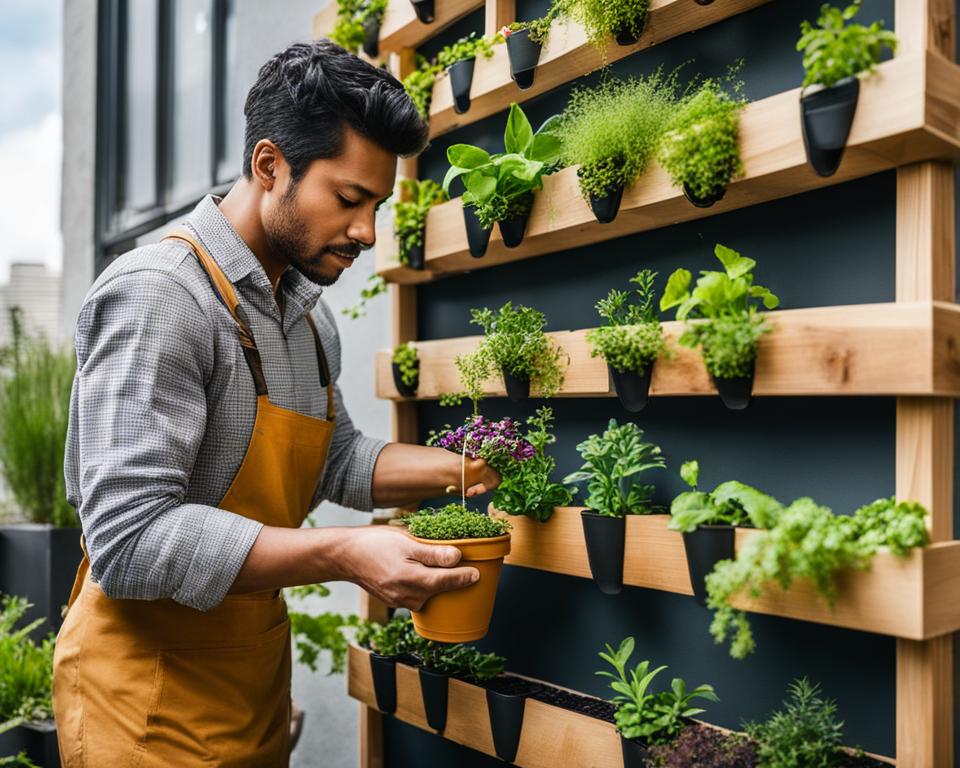
Discover the transformative power of vertical gardening benefits that bring lush greenery to the confines of urban living and small-scale residential areas. Vertical gardening isn’t just about adding a touch of nature to your home; it’s a symbol of innovative urban adaptation, harnessing vertical spaces to cultivate a variety of plants.
One of the easiest ways to introduce flora into your living space is through easy vertical gardening techniques. Whether you opt for pocket planters attached to your wall or tiered planters set on your balcony, these methods require minimal effort to set up. Plus, with plants going vertical, you minimize the spread of pests and diseases, promoting healthier growth and abundant harvests.
When it comes to maintaining your verdant installation, vertical garden maintenance tips suggest checking into self-watering systems and drip irrigation to ensure consistent moisture without over-watering. Efficient water use and automated systems not only save time but also prevent water wastage, strengthening the sustainable aspect of your garden. Moreover, arranging plants by their sunlight needs ensures each gets its fair share of the rays, whether they bask in full sun or thrive in partial shade.
| Component | Benefit | Maintenance Tip |
|---|---|---|
| Air Circulation | Reduces disease risk | Ensure adequate spacing between plants |
| Watering System | Consistent moisture, less effort | Regularly check reservoirs and drip systems |
| Plant Arrangement | Optimal sun exposure | Rotate plants for even light distribution |
| Accessibility | Ease of harvesting, friendly for those with mobility issues | Install at a comfortable height |
The joy is in watching your wall of greens thrive, providing not only an aesthetic appeal to your abode but also the satisfaction of harvesting your own produce. Vertical gardens are a testimony to the ingenuity of small space gardening, making them not just a trend, but a way of life that respects and elevates the restrictions of urban living. Embrace the vertical way and reshape the future of gardening within your home.
Indoor and Outdoor Vertical Gardens: Finding Your Best Fit
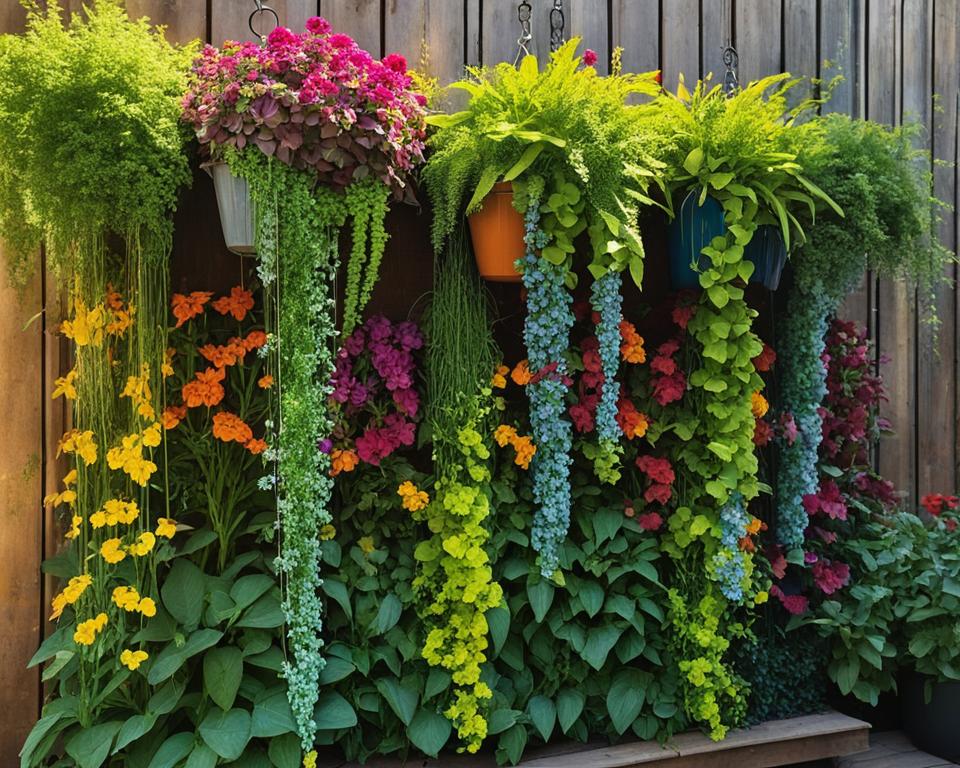
So, you’re exploring vertical gardening ideas and trying to ascertain whether an indoor vertical garden or outdoor vertical garden best aligns with your aspirations and the unique attributes of your space. Here’s a concise guide designed to illuminate the distinct vertical gardening benefits of each option, allowing you to make an informed decision that ensures your garden thrives.
Maximizing Limited Light Conditions
When your space is not basking in abundant natural light, an indoor vertical garden can help circumvent this limitation. You can avail yourself of advanced lighting technologies such as LED Grow Rings and T5 fluorescent lights, which provide a spectrum conducive to plant growth. Products like the LED Grow Rings from Lettuce Grow ingeniously integrate with their Farmstand, empowering suburban farmers to maximize production even in the coziest apartment.
Combating Pests and Weather Challenges
On the flip side, an outdoor vertical garden luxuriates in the splendor of direct sunlight. Yet, it does open the gates to potential garden adversaries. Pests and harsh weather can wreak havoc on your verdant oasis. Proactive gardeners adopt integrated pest management practices and sometimes install protective structures like cold frame greenhouses to shield their precious plant companions. Considering these implications is essential for sustaining a flourishing outdoor vertical garden.
| Aspect | Indoor Vertical Garden | Outdoor Vertical Garden |
|---|---|---|
| Light Source | Artificial light; can be controlled | Natural light; dependent on weather |
| Temperature Control | Regulated environment | Subject to seasonal changes |
| Water Source | Manual or automated systems | Rainwater and manual/automated systems |
| Pest Control | Easier to manage | Requires diligent monitoring |
| Maintenance Level | Generally higher due to controlled conditions | Varies; can be more demanding during adverse weather |
Whether you choose an indoor sanctuary or bask in the glory of outdoor greening, your vertical garden promises not only a plentiful harvest but also a serene, verdant retreat customized to your personal environment. Let your surroundings guide you, think sustainably, and you’ll be rewarded with not just blooms and edibles but an invigorating, living artwork.
The Best Vertical Gardening Systems Highly Recommended by Experts
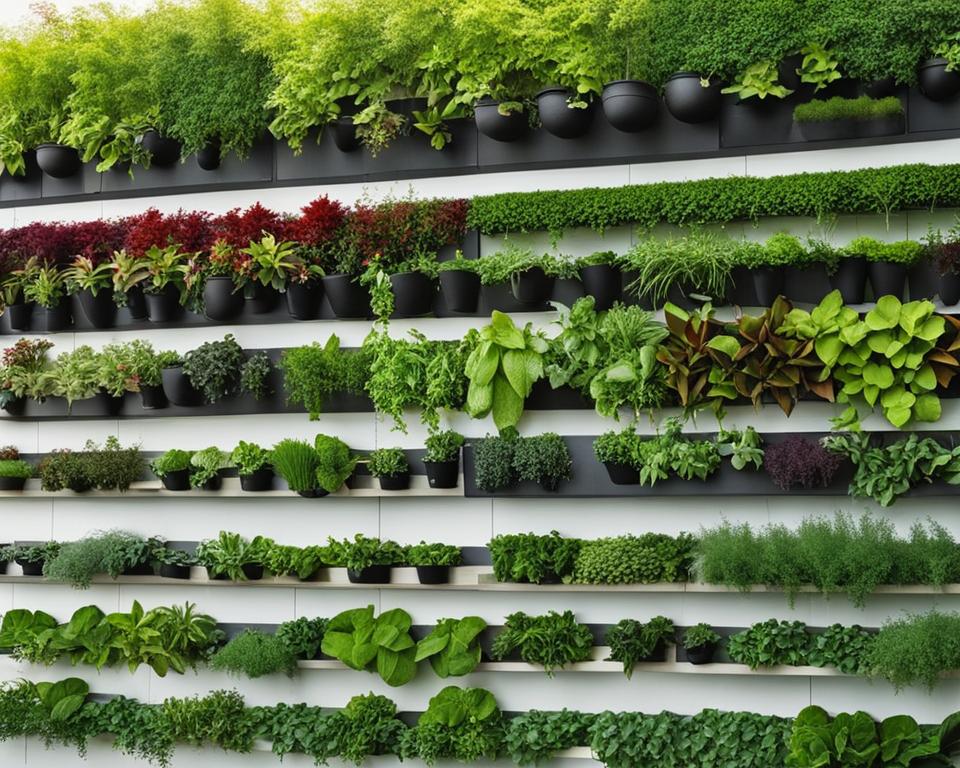
With the rising trend of vertical gardening, you might be exploring your options to add a green touch to your living space. Whether you’re an urban dweller with a balcony or a homeowner with a modest backyard, the best vertical gardening systems designed by leading brands cater to every gardener’s needs. Not only do these systems bring the vertical gardening benefits to your home, but they also provide a range of vertical planter options to enhance your gardening experience.
Let’s delve into the expert-recommended systems that can help you embrace the vertical gardening lifestyle:
- Lettuce Grow Farmstand: Highly celebrated for its smart design, Lettuce Grow’s hydroponic Farmstand lets you grow a stunning array of plants in water without soil. Its vertical structure is not only scalable but automated, simplifying the gardening process.
- Mr. Stacky: If you prefer a more affordable and traditional approach, Mr. Stacky’s outdoor soil-based tower is an excellent choice. It can support 20 plants in a small footprint making it perfect for those with limited space.
- Garden Tower 2: Acclaimed for its composting feature and water recycling system, Garden Tower 2 is a favorite among ecological enthusiasts seeking to garden with sustainability in mind.
Depending on your gardening preferences, these systems offer various features that could be exactly what you need. The key to success in vertical gardening lies in choosing a system that aligns with your personal gardening goals, be it for automated convenience, space-saving designs or environmental sustainability.
When weighing your options for the best vertical gardening systems, consider these expert recommendations as a starting point. All the mentioned systems come with their unique set of vertical planter options, designed to suit different types of gardening tastes and practical needs. Whichever system you choose, rest assured that the plethora of vertical gardening benefits such as space efficiency, productivity, and aesthetic appeal will be a significant boon to your horticultural endeavors.
Caring for Your Vertical Garden: Maintenance Tips and Tricks
Maintaining a lush and vibrant vertical garden is more than a visually appealing endeavor; it’s about incorporating consistent care and understanding the needs of your plants. To thrive, your vertical oasis requires mastery in watering techniques for vertical planters and a commitment to ensuring proper nutrition and growth. Let’s explore some essential maintenance strategies that will keep your green wall healthy and flourishing.
Watering Techniques for Vertical Planters
Effective hydration is crucial for your vertical garden’s success. Brands like GreenStalk offer innovative self-watering solutions that can simplify this process. With these systems, water is added to the top reservoir, ensuring even distribution throughout the entire structure. You must regularly monitor the moisture levels, especially during warmer seasons, adjusting your watering schedule accordingly to prevent both under and overwatering. Remember, your plants’ water requirements may vary depending on their type and the environmental conditions.
Ensuring Proper Nutrition and Growth
Nutrition is the cornerstone of ensuring robust plant development. Begin with a foundation of high-quality soil or a suitable growing medium rich in organic matter. Look for signs of nutrient deficiencies or excesses—yellowing leaves can signal a lack of key nutrients, while dark, lush growth with few fruits or flowers might indicate too much nitrogen. Complement your soil with a balanced, slow-release fertilizer or integrate a liquid feeding program tailored to the specific needs of your plants. Monitoring your plants’ health will guide your nutrition adjustments, ensuring optimal growth.
- Regularly check and refill any water reservoirs in your vertical planting system.
- Observe plant leaves for signs of distress, which might indicate watering or nutritional issues.
- Consider installing a drip irrigation system for consistent, targeted watering.
- Feed your plants with a balanced fertilizer, ideally suited for the type of plants you are growing.
- Rotate your planters if possible, to ensure all sides receive equal light and growth opportunities.
By following these vertical garden maintenance tips, you’ll not only enjoy the aesthetic value of your green space but also reap the benefits of an abundant harvest.
Starting Your Vertical Garden: A Step-by-Step Guide
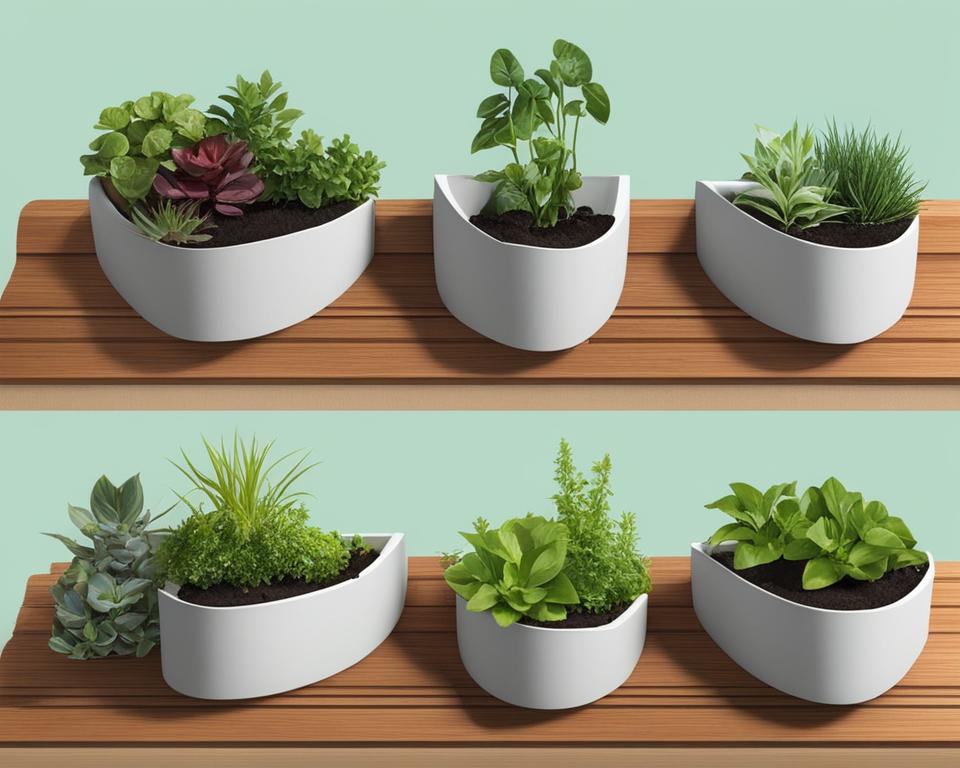
Embarking on the DIY vertical garden journey enriches not only your living space but your lifestyle as well. The process of starting your vertical garden involves strategic planning and execution, from location to plant selection. Let’s dive into the essential steps that will lead you to a flourishing vertical oasis using easy vertical gardening techniques.
- Choosing the Right Location: The process begins with finding a space that receives ample sunlight, whether it’s a balcony, patio, or a wall near a window. Sun exposure is pivotal for the health of your plants.
- Selecting Appropriate Plants: Not all plants are suited for vertical living. Opt for species that thrive with vertical growth – such as ferns, succulents, and certain edibles like strawberries and herbs.
- Building or Choosing a Support System: Now comes the exciting part of constructing or selecting a frame. You can craft a simple trellis or go for ready-made vertical planters – the market offers plenty of choices.
- Preparing Your Soil: If soil-based gardening is your choice, ensure high-quality, nutrient-rich potting soil to provide a solid foundation for your plants.
- Planting: With your structure and soil ready, you can start planting your chosen flora. Make sure to give each plant enough room to grow and access to sunlight.
Remember, easy vertical gardening techniques do not require you to be a professional. With creativity and patience, you’ll see your vertical garden come to life, offering not just aesthetic delight but also a touch of nature’s serenity.
Innovative Vertical Garden Setups: Real-Life Inspirations
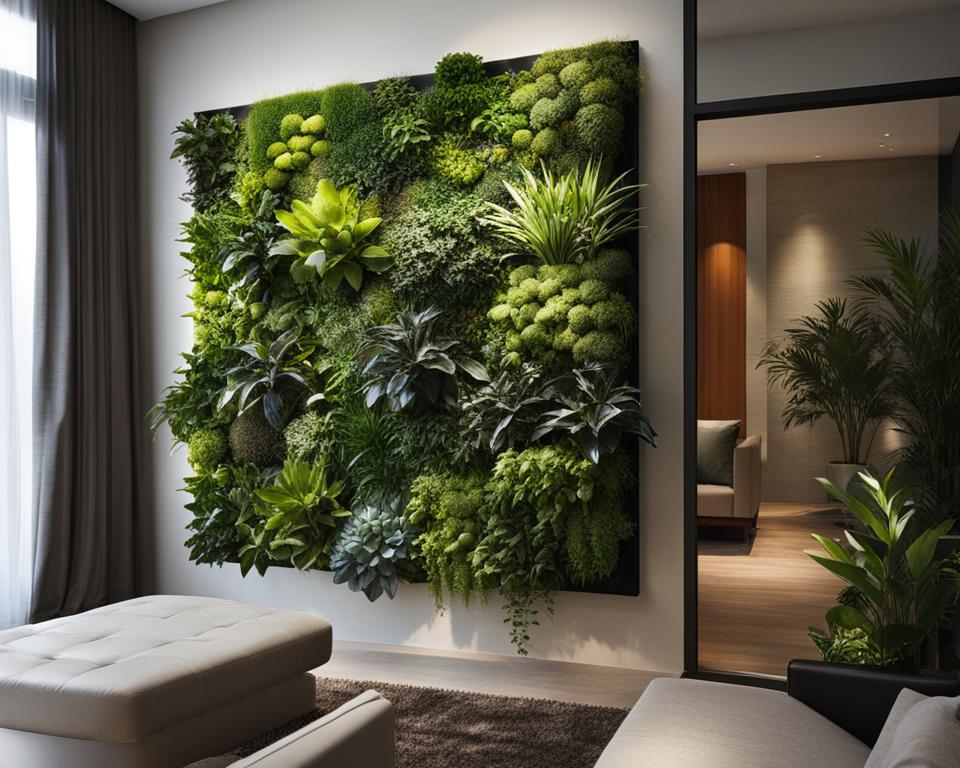
Imagining a home or community space that blossoms with greenery isn’t just a dream—it’s an achievable reality with innovative gardening setups. Vertical gardens are more than a stylish trend; they’re a practical solution for bringing life to urban landscapes and small living quarters. By drawing inspiration from vertical gardening ideas that have transformed spaces worldwide, you can envision the potential of these green marvels in your own environment.
Transforming Living Spaces into Green Havens
Vertical gardens serve as more than just eye-catching features; they bring a piece of nature into residential and commercial spaces, enriching lives with fresh air and living art. The installations vary from simple herb walls in your kitchen to elaborate plant arrangements that cover entire outdoor facades, complete with self-watering systems. Besides beauty and functionality, these living walls often integrate sustainability practices, such as repurposing materials and conserving water with efficient drip irrigation systems. They symbolize the fusion of design and nature, crafting a serene atmosphere for dwellers and visitors alike.
Community Projects and School Gardens
Community vertical garden projects take the wonders of vertical gardening to a broader canvas, fostering a sense of unity and ecological stewardship among its participants. They’re not only a source of local produce but also a hands-on educational tool for schools. Children and adults learn important lessons on agriculture, sustainability, and teamwork—lessons that sprout along with each plant. These gardens become community nexus points, illustrating the impact of collective efforts in creating sustainable and nutritious food sources right in the heart of urban areas.
The strength of these innovative setups lies in their versatility and adaptability. Whether you’re looking to beautify a small apartment or engage in a larger scale project, there’s a vertical gardening system that fits your needs. The growth of these gardens reflects our growing desire to integrate nature into every aspect of our lives and the boon of innovating for healthier, more sustainable living spaces.
Conclusion
As we’ve explored the heights and depths that plant cultivation can achieve through innovative methods, it is evident that vertical gardening benefits urban dwellers and those with spatial constraints by providing efficient, sustainable, and accessible gardening solutions. The myriad of vertical gardening ideas and systems available, from the technologically advanced hydroponic set-ups, like the Lettuce Grow Farmstand, to the simpler, yet effective stackable planters, like GreenStalk Leaf, reflects the diversity of gardener needs and aspirations. Your choice in a vertical garden can fulfill various roles, whether it’s creating an oasis in a cramped city apartment or contributing to the greenery of a community space.
Best vertical gardening systems have redefined our relationship with nature and agriculture, allowing you to harvest produce from the comfort of your home or office. Aside from the space-saving aspect, these systems encourage healthier plant growth, reduce environmental footprints, and make gardening an achievable endeavor for everyone, regardless of their level of expertise. The convenience of maintaining a vertical garden through innovative techniques has also been a game-changer, making it easier than ever to enjoy the rewards of your homegrown herbs, vegetables, and flowers.
Your journey into vertical gardening, whether it’s born out of necessity or a desire to engage with the environment in a creative, eco-friendly way, promises to be filled with personal satisfaction and discovery. The increased accessibility to fresh, wholesome produce, the aesthetic appeal of a lush, green living space, and the educational opportunities that come with hands-on planting are just scratching the surface of what vertical gardens have to offer. As an ever-evolving practice, vertical gardening awaits your unique touch to flourish in the concrete jungle.
FAQ
What are the best vertical gardening systems available?
The best vertical gardening systems include soil-based stackable planters like Mr. Stacky and GreenStalk Leaf, hydroponic models like Lettuce Grow Farmstand and Gardyn Home Kit, and comprehensive setups such as the Garden Tower 2 which incorporates composting features.
What are the main benefits of vertical gardening?
Vertical gardening benefits include efficient use of space, which is perfect for urban living; improved air circulation around plants; easier maintenance with reduced need for bending and kneeling; aesthetic enhancement of spaces; and the potential for producing fresh produce in limited areas.
How can I create a vertical garden in a small space?
You can utilize space-saving gardening solutions such as stackable pots, wall planters, or modular vertical systems. Consider a DIY vertical garden by using upcycled materials like pallets or hanging organizers to craft your setup. Tailor your approach to your space constraints and aesthetic preferences.
Hydroponics, aeroponics, or soil-based systems: Which is right for me?
The choice between hydroponics, aeroponics, or soil-based systems depends on your preferences for maintenance, interest in technological involvement, and space availability. Hydroponics and aeroponics are ideal for clean, soil-free gardening and efficient water use, whereas soil-based systems may be preferred for their simplicity and natural approach.
Can vertical gardens be used both indoors and outdoors?
Yes, vertical gardens can be adapted both for indoor and outdoor use. Indoor vertical gardens often require additional lighting solutions, while outdoor setups can take advantage of natural sunlight and rainwater but may need more protection against weather and pests.
What tips can you provide for maintaining a vertical garden efficiently?
For vertical garden maintenance, ensure regular watering through drip irrigation or self-watering planters, monitor plant health, and adjust nutrient delivery as needed. For soil-based systems, using high-quality soil and providing occasional fertilizers will support robust plant growth.
How do I begin setting up my vertical garden?
Start by selecting the right location with sufficient light, choosing suitable plants for vertical growth, and deciding upon the framework of your garden—whether it’s a purchased vertical planter system or a DIY solution. Then, prepare your soil or growth medium and plant your seeds or seedlings.
What innovative vertical gardening ideas can inspire me?
Look into living walls for interior design improvement, or investigate community and school garden projects for social engagement. Innovative setups that integrate technology like smart watering systems or use repurposed items can also provide unique and inspiring ideas for your vertical garden.

